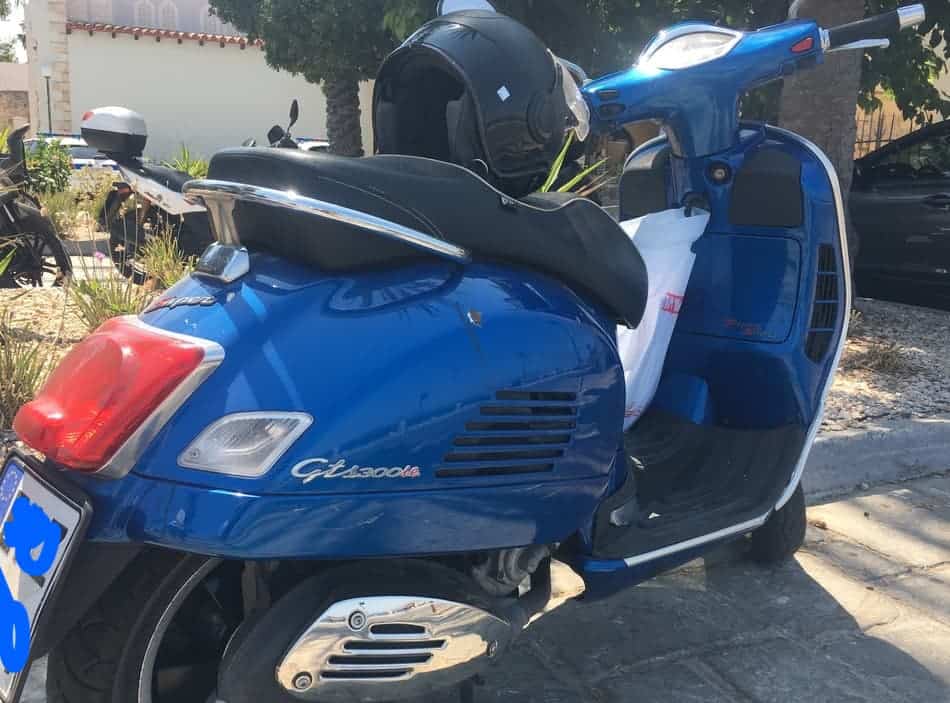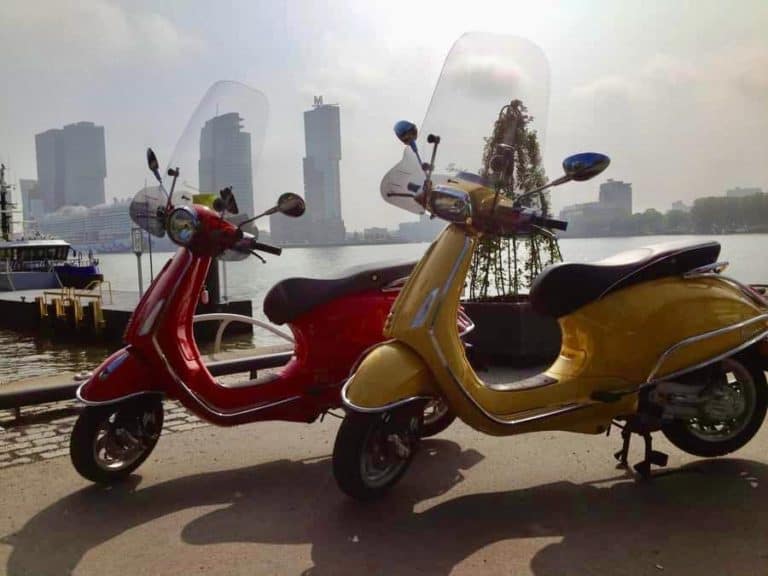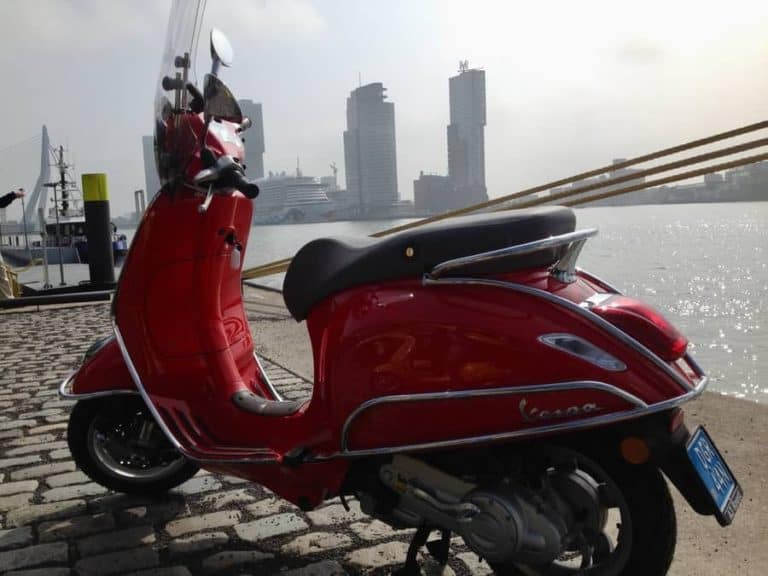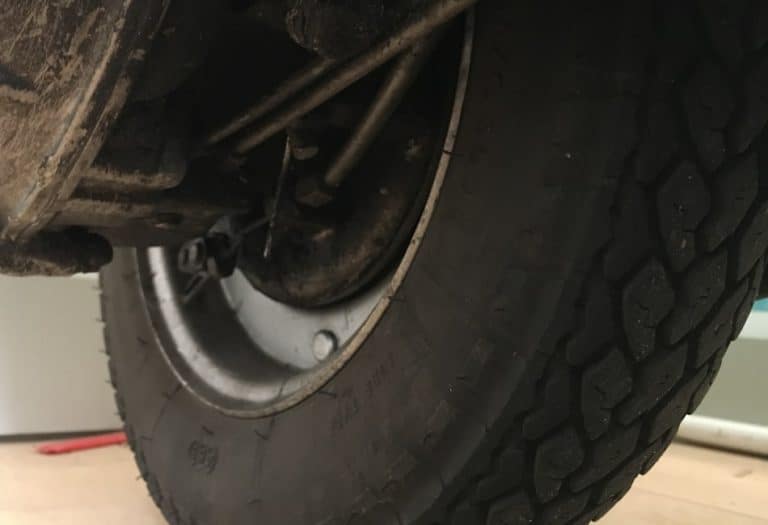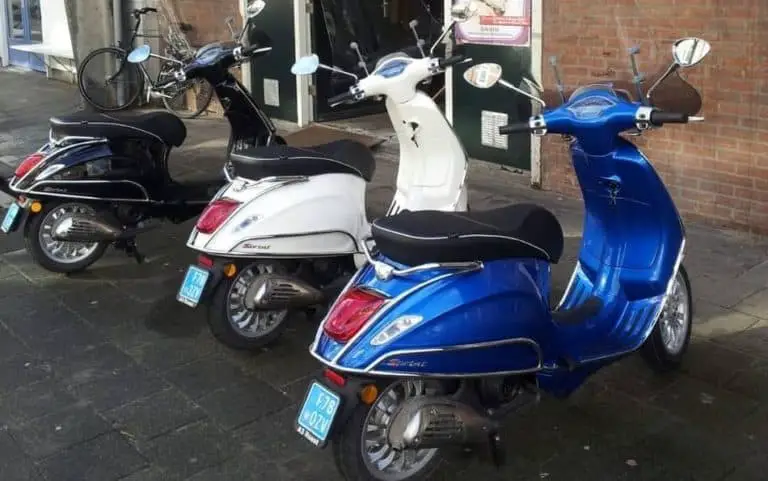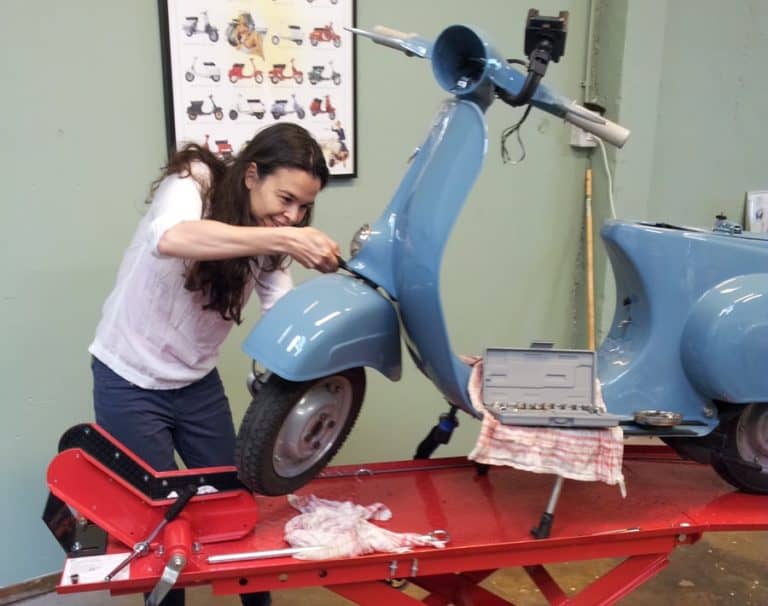How to Find Your Vespa Paint Code?
Just like a car, the Vespa has a metal frame making it possible to repair dents and scratches with a proper paint job. It is however important to know exactly what paint code your Vespa has. A slight difference in the shade of color is immediately visible and something you really do not want.
The original Vespa paint code is found on the inside of the frame, under the seat storage. It is indicated as ‘Colour’ and is usually followed by 3 digits. The paint code for classic Vespas should be located under the seat near the gas tank. If absent you can look up the paint code by model and year.
Unfortunately, it is not always easy to find the Vespa paint code. What happens if the Vespa doesn’t have the original color? I have seen many Vespa GTS and Sprints with customized colors. Customizing your Vespa is a way to differentiate yourself from others. This is the same for the pristine-looking classic Vespas. These have often been repainted with a ‘vintage’ color that is different from their original such as metallic aluminum grey or beige.
So let’s have a closer look at the colors Vespa Piaggio has used over the years and what your possibilities are for finding the correct paint for your beloved Vespa.
What color do Vespa come in?
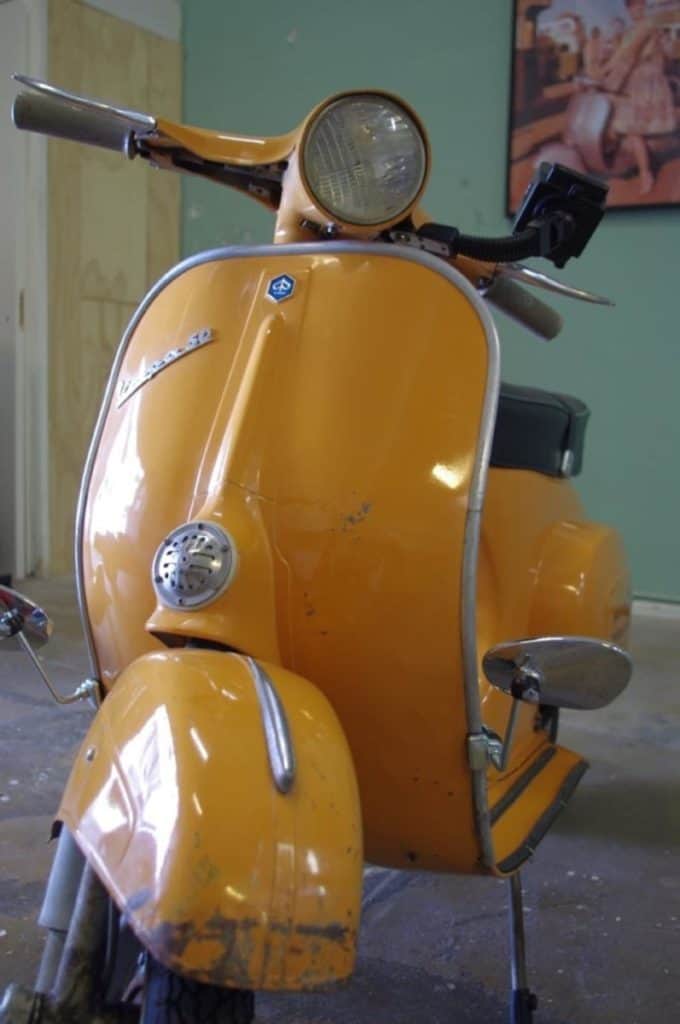
Until the 1980’s the original Vespa paint codes were from the Max Mayer paint company. Vespa models were often launched in one to three colors. These colors had a specific Max Meyer code, which is 5 or 8 digits long.
The last three digits are the paint code from the Max Meyer Duco Painting company that provided Piaggio with all the paint for their scooters. The Max Meyer Duco company was bought by PPG in 1997 but you can still use the last three digits to find the right paint.
With a large number of Vespa models over the years, you can imagine that there is also a long list of Max Meyer colors used. If you have the exact code you can easily find the color by searching on google.
However, if you don’t have the original Max Meyer paint code of your classic Vespa or its original booklet then you can also find the correct code by searching the model and the year it was produced. There are books such as Vespa by Giorgio Sarti that have added the Max Meyer code to every model and year.
The color of the classic Vespa has always been a winning point for Piaggio. They knew exactly which Max Meyer color to use to stay attractive for a certain type of age and period. For instance, in the beginning, many Vespas had modest colors such as dark green, metallic or beige. But in the 1970 things changed. Then Piaggio used brighter colors such as orange, red, and blue.
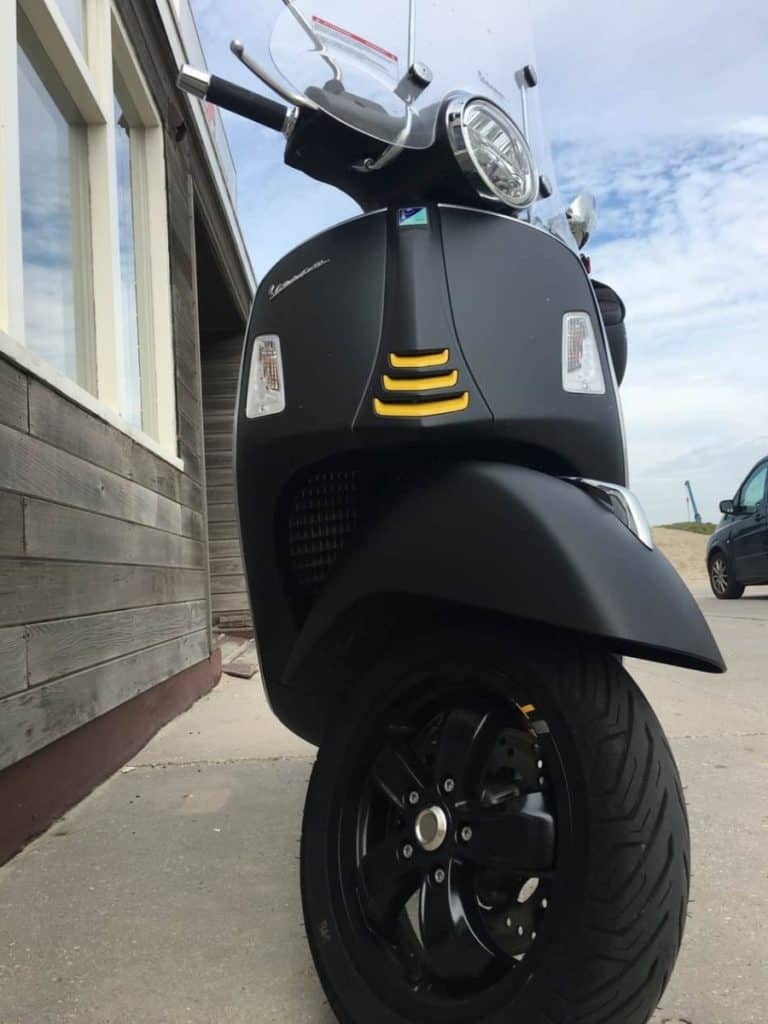
Towards the 1980s the Vespa PK series came in the colors red, white, blue, and green. These colors are typical colors from that time. Other models soon got different colors such as light blue and in the 1990s yellow.
Today modern Vespas come in common colors such as grey, dark blue, black, and red. Additionally each year there are new models with specific colors such as the GTS300 Arancio Impulsivo (orange-red) Primavera Arancio (orange) or the Vespa Sprint Notte, also known as Nero Matt.
We used to rent out various colors of Vespas. The most popular was the bright Vespa Sprint Giallo (yellow) followed by any other model in the color red. The colors white, black and blue were surprisingly not the favorite. Perhaps choosing a color for one day is different than owning a Vespa in the brightest color. That said, in the case of the Vespa we prefer the more colorful the better.
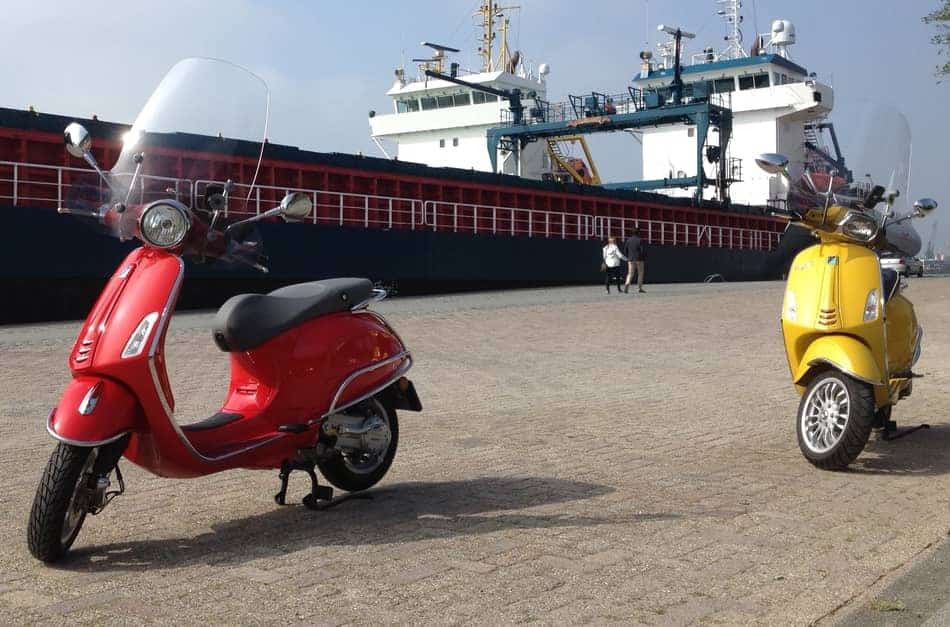
Occasionally Piaggio also launches limited editions which have a unique color such as their Vespa GTS 300 and Primavera 75th which come in the color ‘Giallo 75th’.
Another example is the color ‘Rosso Passion of the Vespa 946 or Primavera RED. With this bright red color, Piaggio wants to make a statement. For every RED Vespa sold Piaggio provides 500 days of HIV medication that will help pregnant mothers prevent passing the virus on to their unborn baby.
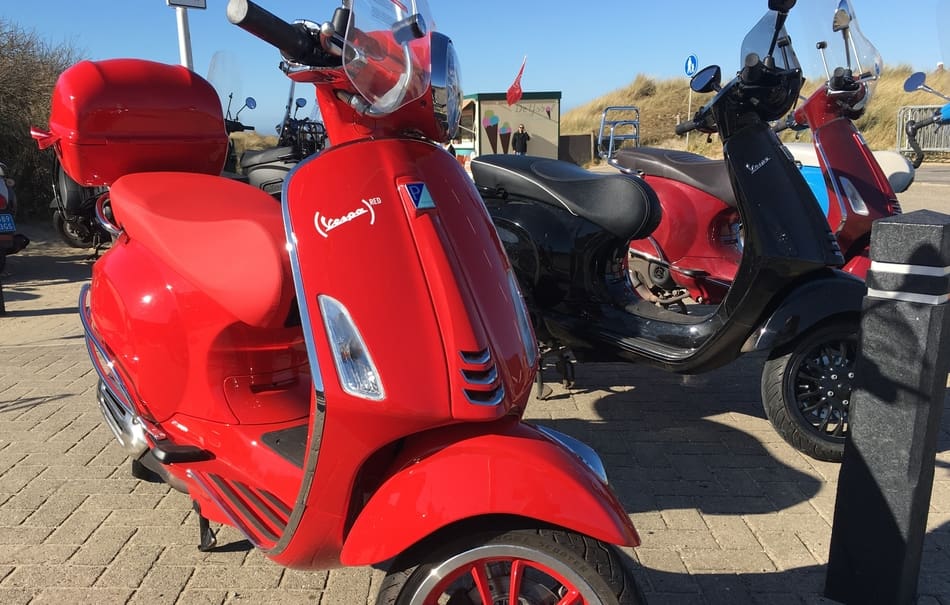
In the end, any color suits a Vespa. Many customize their Vespa by changing the color that suits their taste and/or style. This is also one of the winning points that have made Vespas so popular over the years.
However, keeping to the original color makes it easier to repair dents and scratches. Just by looking up the color code, you can find aerosols and paints online that match the Vespa color exactly.
Which color is the best for a Vespa?
The best color for a Vespa is the original color it was launched in. If it is possible to keep the original paint in good condition, then after some time the value of the Vespa will increase. This is naturally the case for classic Vespas however sometimes you can apply this rule to a modern Vespa as well. If Piaggio has only produced a specific model in a certain color for just one year then in time the value of the Vespa can increase.
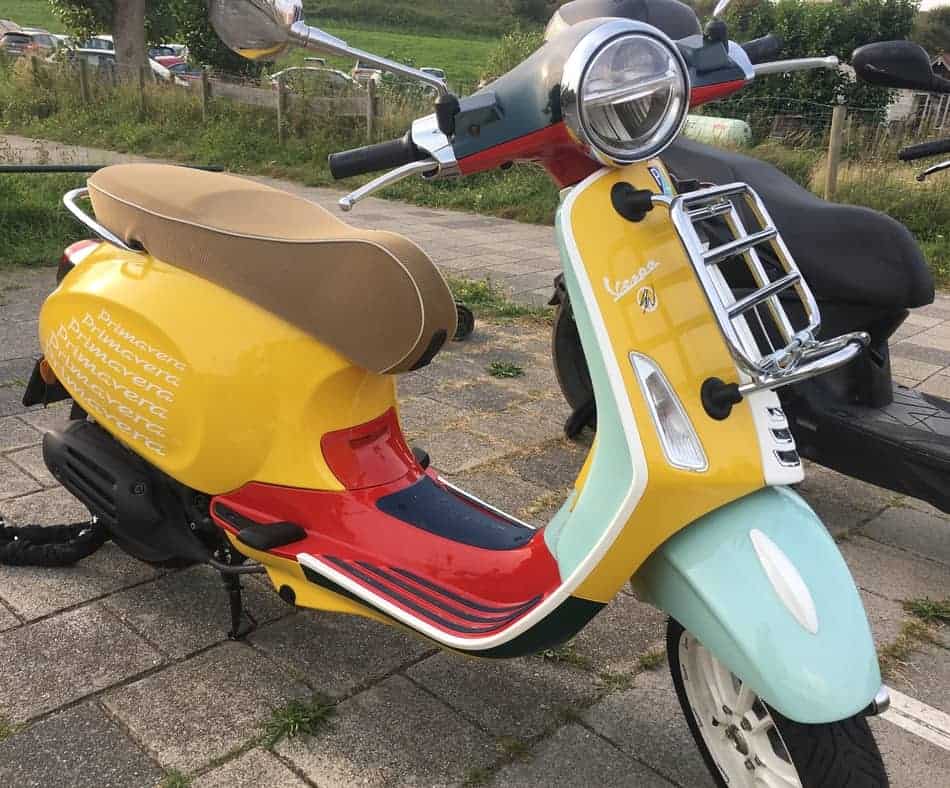
While the increase in value is a nice advantage of sticking to the original Vespa color, another advantage is that the paint code is easier to find if you need to fix damages to the paint.
However, like all fashionable and trendy things in life, owners love to change the color of a Vespa to their liking. Customizing a Vespa is popular and the color can change dramatically depending on the taste and image you want to portray. I have seen a lot of classic Vespa repainted in ‘vintage soft’ colors.
I noticed that the modern Vespa Sprint is very popular among young male drivers who select customized colors making this new Vespas crazy expensive. You will pay around 2000USD more if the Vespa Sprint comes in the color such as Sapphire Green, Azure Blue, or Opaco Aqua Cameleon.
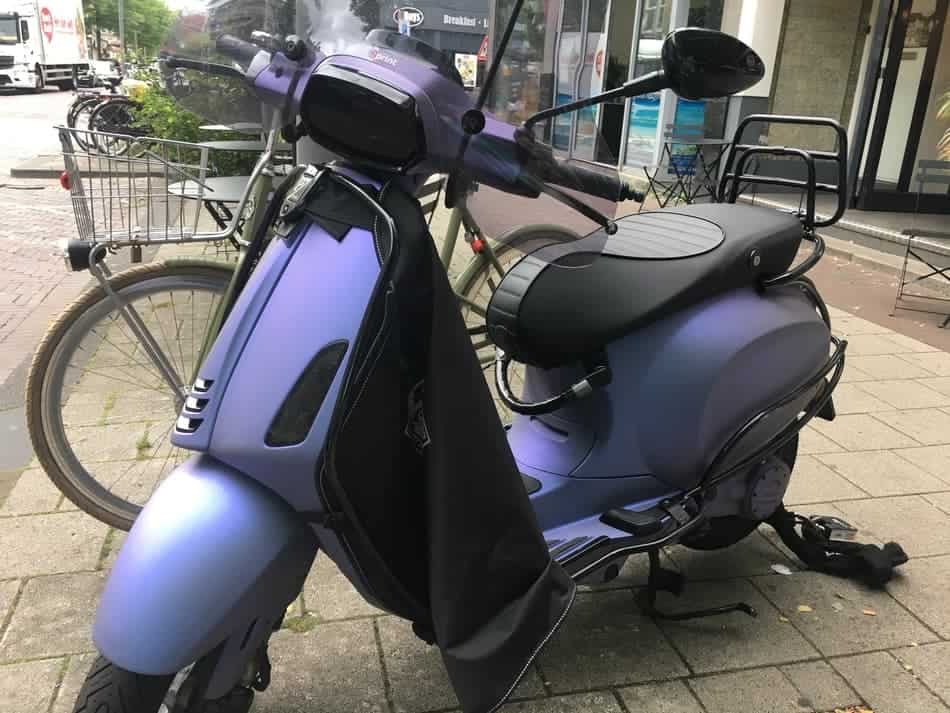
There are also Vespa drivers who prefer to go for the “rat look”. This look is a rough look in which the dents and scratches reflect the image of the Vespa. Some look like they are really in bad shape but still drive smoothly.
Our Vespa V50 1975 Giallo Positano still has its original paint. Pretty unbelievable if you realize that it is almost 50 years old. It might not look smooth and flashy like other restored classic Vespas, but we think it shows that this Vespa has character and rich history.
How to find the correct paint for a Vespa?
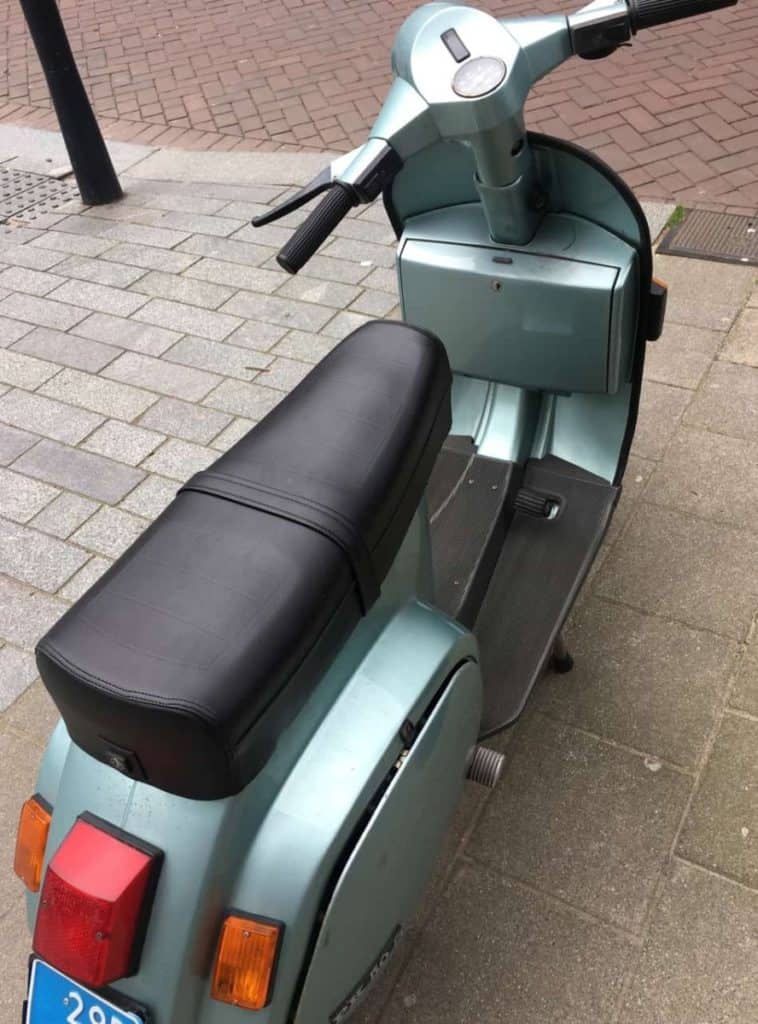
Once you have found the Vespa paint code, all you need to do is google the Vespa model with the code and you will find a whole list of paint shops selling exactly what you need.
Most paint shop websites also have options where you only need to select the brand, model, and year. Once you have done that you will see the original Vespa paint colors. It’s pretty straightforward.
You can find all types of paint applications for damages on the paint of modern Vespas. Touch-up paint is ideal for small scratches whereas aerosols are ideal to cover larger surfaces. We used touch-up paint on one of our Vespas and it looked pretty ugly. I think you can only use it for tiny areas otherwise it should be sanded and touch-up painted a couple of times to get a nice result.
So we do recommend having a professional paint service if you want to job well done.
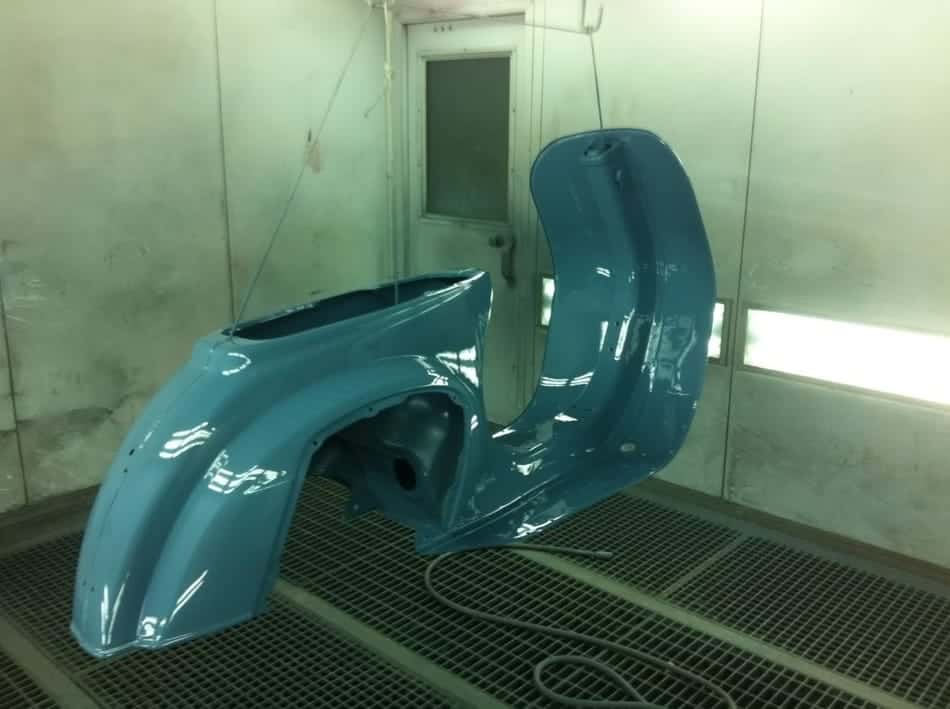
We always brought our Vespas to a professional body repair shop. It is amazing how well damages can be repainted. Our red Vespa LX looked like new after it had fallen a dozen times and looked horrible.
In the case of a classic Vespa with a Max Meyer paint code, you might need to contact a specialized paint shop that will order it for you. At one point we rented out three classic Vespas in various colors. Only through experience did we learn that it was pretty tricky to let inexperienced people drive a classic Vespa, especially when two of those Vespas didn’t have their original color.
Our dove blue and pistachio Vespa V50 were renovated and did not have their original colors. At one point one of our customers crashed the dove blue one damaging the floorboard and shield. Luckily we had a tin with a little bit of leftover paint. The body repair shop just needed a tiny bit to get the job done perfectly.
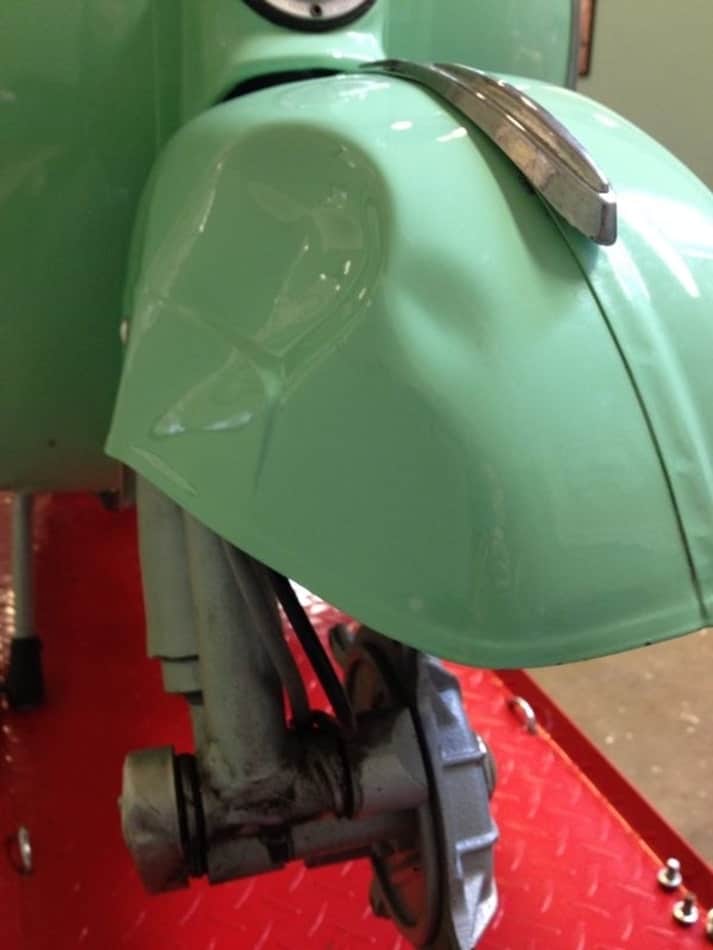
As for the Pistachio, it was a whole different story. A customer drove straight into the bushes bending the whole front fender. It had to be replaced by a new one. Unfortunately, we didn’t have any paint or color code. Luckily we found an automotive paint shop that was able to find the exact color with a spectrophotometer. This type of camera measures the correct color code from different angles in order to get the right mix.
There are several factors that affect the right mix and can include nozzle size, nozzle pressure, humidity level, distance to your scooter, and how the paint will be applied to dry. So if you want the job well done, let a professional do it for you. In the end, it is worth the money.
How much does it cost to paint a Vespa?
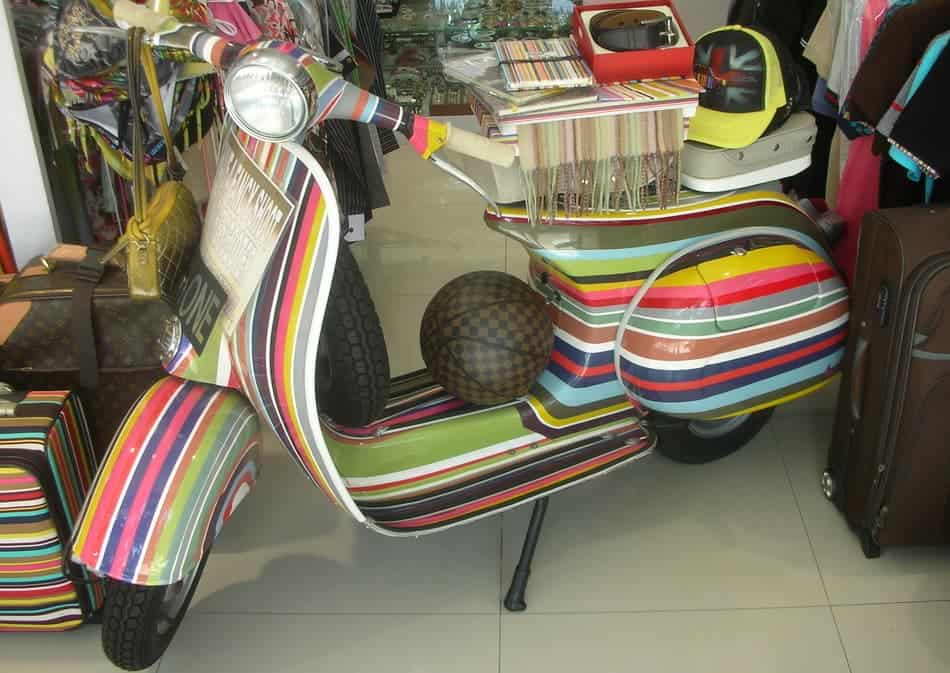
The cost of repainting your Vespa depends on the country where it is done. From our own experience costs can be between USD1000 to USD1500. You can expect far less if small areas just need to be repainted, especially if there are no dents involved. We paid a maximum of US150 for our smaller paint projects.
You shouldn’t want to save on a proper paint job. We have seen a Vespa that seemed to be repainted pretty well but once we looked closer we could see drips of dried paint around the rear light and the floorboard.
Labour is the most expensive part when it comes to repainting your Vespa. You might be able to cut costs by having the Vespa repainted at a car repair body shop, as they have all the necessary tools at hand.
If you do need to repaint an area or your whole Vespa you might want to check this list of tips we have created on saving costs on dent repair and scratch removal.

